
10 Garden Box Ideas That Make Planting Easy and Fun
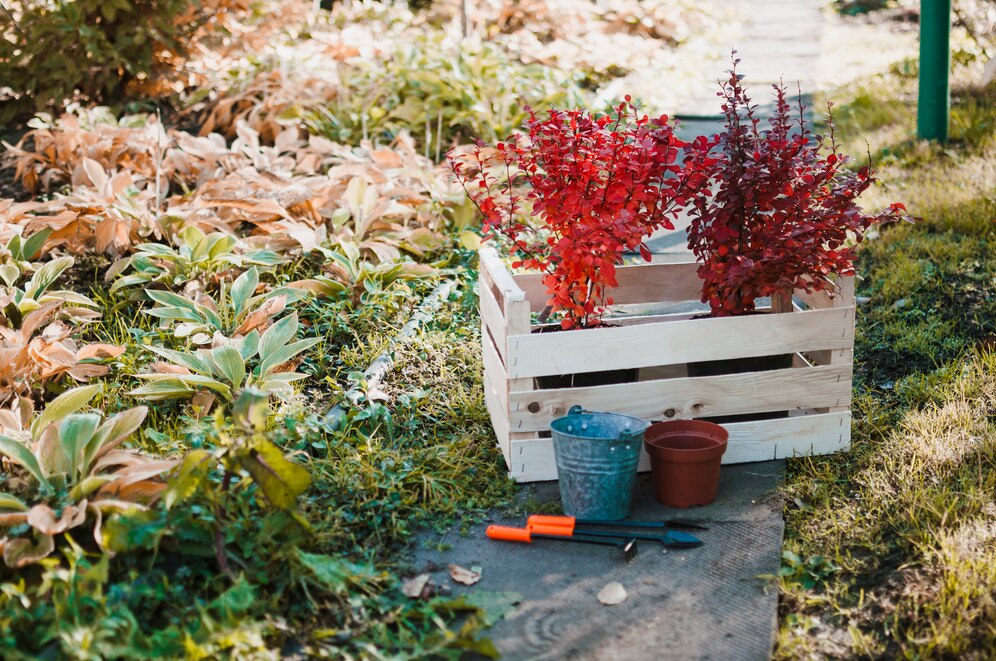
Garden boxes help you grow plants in a smart and simple way. They work well in small yards, patios, and even balconies. You can plant flowers, vegetables, or herbs without digging up the ground. These boxes also keep weeds away and make it easier to water and care for your plants.
Wood, metal, or recycled materials can all turn into great garden boxes. Some people stack them high to save space. Others add wheels so they can move the boxes around. Paint or decorate them to match your style.
Each garden box becomes a small space full of life. It gives you control over soil, sunlight, and layout. You decide what grows and how it grows.
These 10 ideas can help you start fresh or improve what you already have. Big or small, your garden box can bring beauty and fresh food right to your door.
10 Garden Box Ideas
A garden box makes planting easier. It keeps things tidy, saves space, and adds style to your yard. No big yard? No problem. A small garden box still grows flowers, herbs, or vegetables. Even balconies or patios can hold one.
Garden boxes come in many shapes and styles. Some look rustic. Some feel modern. Some cost almost nothing. Others last for years.
Let’s explore 10 simple and beautiful garden box ideas for every kind of space.
1. Wooden Raised Garden Box
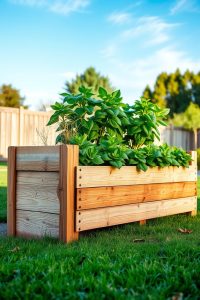
This one feels classic. It uses basic wood—like cedar or pine. Four boards form a square or rectangle. That’s it. Simple and strong.
Place it on soil, grass, or even gravel. Fill it with good dirt. Add seeds or seedlings. Done.
Great for veggies like lettuce, carrots, or tomatoes. Easy to water and easy to weed.
2. Vertical Garden Box with Shelves
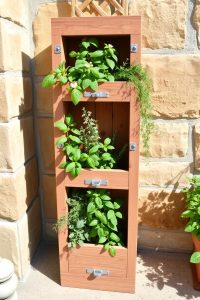
Tight space? Go up instead of out. A vertical garden box saves room and still holds plenty.
Use wooden shelves stacked like steps. Each level holds soil and plants. Great for herbs or small flowers.
Perfect for balconies, patios, or small backyards. You can even lean it against a wall.
3. Metal Trough Garden Box

Farm style meets garden style. A metal trough gives a rustic, bold look. It also lasts a long time.
Buy one from a farm store or use an old one. Fill it with soil. Add drainage holes if needed.
This box fits well in large yards. Use it for veggies, sunflowers, or even small fruit trees.
4. Raised Garden Box with Legs
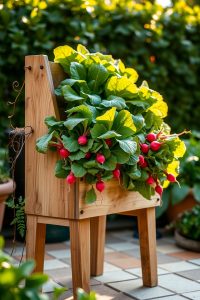
No bending. No crouching. This raised box sits up high on legs. Great for older gardeners or anyone with back pain.
Also works well for patios or paved spaces. Water drains easily from the bottom. Place a small bucket under to catch runoff.
Use it for herbs, lettuce, or strawberries.
5. Cinder Block Garden Box

Strong, cheap, and easy. Cinder blocks can form the edges of a garden box. No nails. No tools. Just stack and plant.
Place the blocks in a rectangle. Fill the center with soil. Use the block holes for flowers or herbs.
The gray blocks contrast nicely with green plants.
6. Recycled Pallet Garden Box

Old pallets make great garden boxes. Tear one apart or leave it whole. Add landscape fabric inside to hold soil.
Great for herbs or shallow-rooted plants. Also good for tight spaces or renters.
It’s a smart way to reuse wood and save money.
7. Wheelbarrow Garden Box
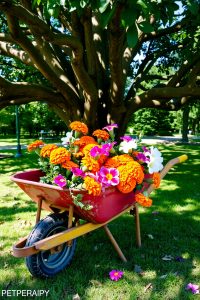
Don’t throw away that old wheelbarrow. Use it as a garden box. It holds soil and moves anywhere.
Great for small yards. Change its location to follow the sun or avoid too much rain.
Paint it for color. Let flowers spill over the sides.
8. Stone-Edged Garden Box

Stones make a strong, natural-looking border. Use large rocks or bricks to form a square or circle. Fill the center with soil.
It blends well with other garden parts. Works well for herbs, flowers, or even small shrubs.
No wood. No tools. Just earth and stone.
9. Hanging Garden Boxes

Hang small garden boxes on walls, fences, or railings. Use wood, metal, or even strong plastic.
Each box holds flowers, herbs, or strawberries. Hang them in rows or patterns.
Water often. Sun and air reach every box easily.
10. Painted Garden Box with Trellis

Add color and height. A painted box adds style. A trellis adds support.
Paint the box to match your outdoor space. Attach a wooden or metal trellis at the back.
Grow beans, cucumbers, or climbing flowers. The trellis helps plants rise and creates a backdrop.
FAQs
What is the best wood for a garden box?
Cedar works best. It lasts long and doesn’t rot fast. Pine is cheaper but may not last as long.
How deep should a garden box be?
At least 6 to 12 inches. Deeper soil helps roots grow strong. Some plants need more depth.
Can I place a garden box on concrete?
Yes. Use a raised box or one with legs. Make sure it drains well.
Do garden boxes need drainage holes?
Yes. Water must drain. Too much water causes root rot. Always check for holes or gaps at the bottom.
How often should I water a garden box?
That depends on weather and plant type. In hot sun, water daily. In cool weather, less often.
Conclusion
A garden box brings nature closer. It fits in small spaces and makes planting easy. You don’t need fancy tools or a huge yard. Just a little soil, some seeds, and a box.
Each idea here adds its own charm. A wooden box gives a clean look. A wheelbarrow adds fun. Cinder blocks save money. Hanging boxes use walls in smart ways.
Pick one idea. Start small. Let your garden grow with time. It’s not about perfect rows or the most flowers. It’s about the joy of growing something with your hands.
Nature fits in any space. Even a tiny box holds big beauty.
